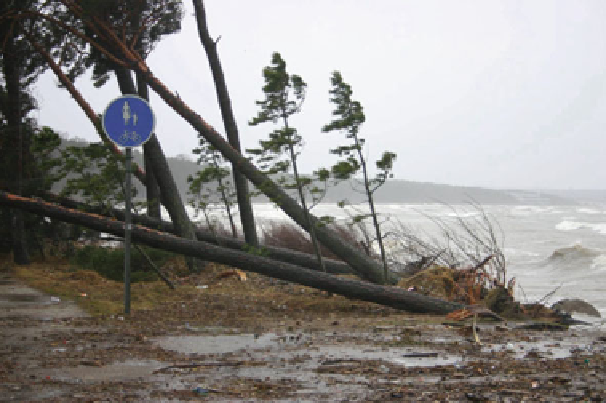Geoscience Reference
In-Depth Information
eastern part of which is wide enough to support relatively intense eolian transport
13.3 Features of Pirita Beach and Narva-Jõesuu Beach
Owing to historical reasons, there exists a very limited amount of detailed studies
into properties of North Estonian nearshore and beaches starting from the 1940s
USSR and thus mostly closed to public and almost inaccessible also for scientific
research. Only a few sections of the coast (such as sandy beaches at Pirita and Narva-
Jõesuu) were open for recreational purposes and data about their evolution cover to
some extent also the time interval from the 1940s to the end of 1980s.
Both beaches in question have been subject to considerable anthropogenic impact
apparently stabilised by the postglacial uplift and natural sediment supplies. During
recent decades, however, a gradual decrease of the dry beach width, rapid recession
of the till cliff at the northern end of the beach, and extensive storm damage to the
the beach with material dredged from a neighbouring harbour or transported from
mainland quarries. The main reason behind the gradual beach degradation is the
human intervention that has cut down the major natural sand supplies to the beach
Fig. 13.5
Erosion and loss of pine forest on the low dune during a strong storm in January 2005
Publishers)

